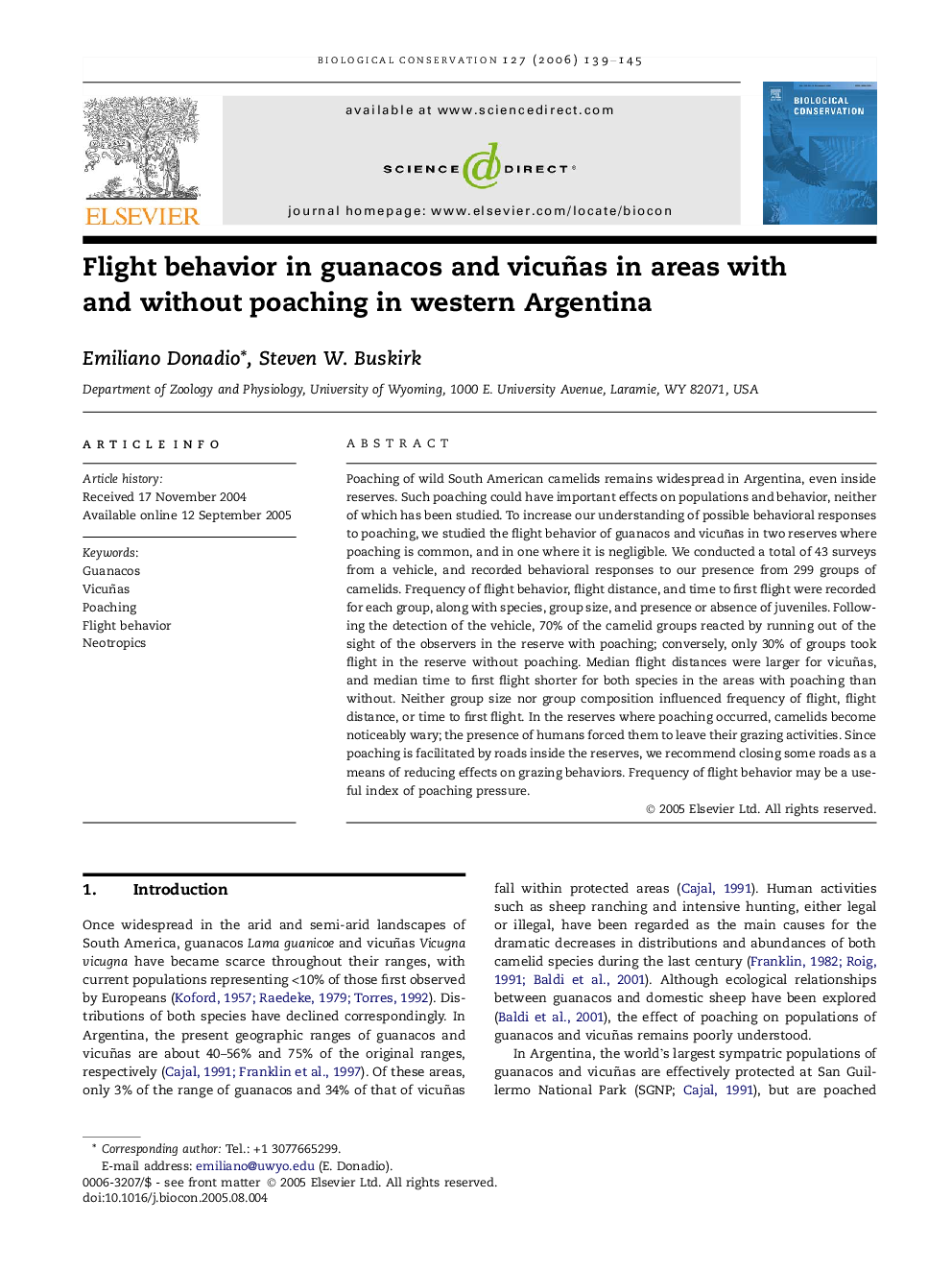| Article ID | Journal | Published Year | Pages | File Type |
|---|---|---|---|---|
| 4387884 | Biological Conservation | 2006 | 7 Pages |
Abstract
Poaching of wild South American camelids remains widespread in Argentina, even inside reserves. Such poaching could have important effects on populations and behavior, neither of which has been studied. To increase our understanding of possible behavioral responses to poaching, we studied the flight behavior of guanacos and vicuñas in two reserves where poaching is common, and in one where it is negligible. We conducted a total of 43 surveys from a vehicle, and recorded behavioral responses to our presence from 299 groups of camelids. Frequency of flight behavior, flight distance, and time to first flight were recorded for each group, along with species, group size, and presence or absence of juveniles. Following the detection of the vehicle, 70% of the camelid groups reacted by running out of the sight of the observers in the reserve with poaching; conversely, only 30% of groups took flight in the reserve without poaching. Median flight distances were larger for vicuñas, and median time to first flight shorter for both species in the areas with poaching than without. Neither group size nor group composition influenced frequency of flight, flight distances, or time to first flight. In the reserves where poaching occurred, camelids become noticeably wary; the presence of humans forced them to leave their grazing activities. Since poaching is facilitated by roads inside the reserves, we recommend closing some roads as a means of reducing effects on grazing behaviors. Frequency of flight behavior may be a useful index of poaching pressure.
Keywords
Related Topics
Life Sciences
Agricultural and Biological Sciences
Ecology, Evolution, Behavior and Systematics
Authors
Emiliano Donadio, Steven W. Buskirk,
